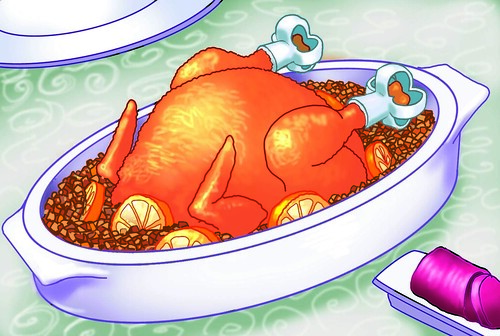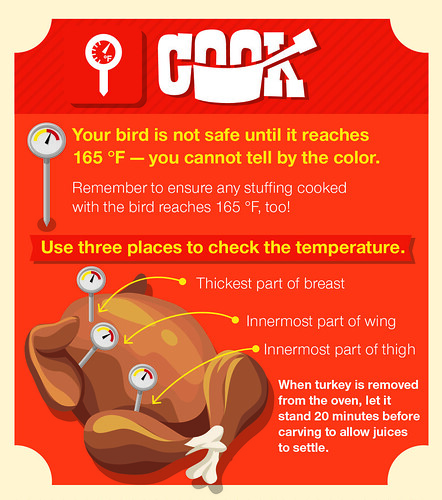
It’s here. You’ve been planning for this since the moment you packed away your summer flip-flops – Thanksgiving Day. After safely handling and preparing your turkey, you’ve got hungry guests headed your way expecting a grand feast, so it’s time to start cooking.
Wash Your Hands, But Not the Turkey!
To begin, wash your hands with warm water and soap for 20 seconds. This is one of the simplest yet most effective ways to prevent the spread of many types of infection and illness, including foodborne illness.
Many of us have those notorious, well-intentioned relatives who try to help us in the kitchen by providing assistance and advice on what we can do differently while we’re preparing the Thanksgiving meal. If you don’t mind multiple cooks in the kitchen, just make sure these helpers wash their hands if they’re planning on handling any food.
While on Thanksgiving you’ll be washing your hands and trying to wash the soda your uncle spilled off of your carpet, do not wash your turkey. When running water hits the uneven surface of your turkey, it can splash pathogens onto the sink, draining board or counter, and onto other food. This transfer of bacteria is called cross-contamination. Washing poultry does not make it cleaner; it only increases your risk of spreading pathogens that cause foodborne illness.
Keep Raw Turkey Separate from the Rest of Your Meal
Just like you want to keep your argumentative relatives separate at your dinner table, you also want to make sure you separate raw turkey from fresh food on your menu. You should also use separate cutting boards, plates, and utensils to avoid cross-contamination. Items that have touched raw meat should be washed with warm soap and water or placed in the dishwasher.
Look for the Magic Number: 165 °F
One of the most mysterious tasks for a Thanksgiving host – besides trying to understand how exactly that third cousin at the dinner table is related to you – is figuring out when the turkey is done. Your bird is done when its temperature reaches 165 °F, the temperature that kills harmful pathogens like Salmonella and Campylobacter.

The whole bird must reach 165 °F, not just the outside of the drumstick, before your guests can begin enjoying it. The USDA recommends that you insert your food thermometer in three locations to determine the bird’s temperature:
- The innermost part of the thigh;
- The innermost part of the wing; and
- The thickest part of the breast
Don’t Forget the Sides
While the turkey is the headliner of the Thanksgiving feast, keeping your side dishes safe is important too. Washing your fruits and vegetables can remove grit from their surfaces, but it won’t remove the pathogens they pick up if they come into contact with your raw turkey or unclean utensils or surfaces. Keep all other foods away from raw turkey juices. Once cooked, side dishes can still be contaminated if they come in contact with raw turkey juices, so keep cooked items separate from your prep materials.
Need Help? Don’t Panic
If you have more questions, visit Let’s Talk Turkey to learn how to safely plan, select, thaw, and prepare a turkey or check out these turkey resources at FoodSafety.gov. Stay tuned this month for more blogs about how you can make your holiday happy and healthy for everyone at the table.
If you have additional questions about cooking a turkey, call the USDA Meat and Poultry Hotline at 1-888-MPHotline (1-888-674-6854) or chat live with a food safety specialist at AskKaren.gov available from 10:00 a.m. to 4:00 p.m. Eastern Time, Monday through Friday, English or Spanish.
If you need help on Thanksgiving Day, the USDA Meat and Poultry Hotline will be open from 8:00 a.m. to 2:00 p.m. Eastern Time. You can also ask questions of “Karen,” FSIS’ virtual representative, 24/7 at AskKaren.gov. Visit PregunteleaKaren.gov for questions in Spanish.
